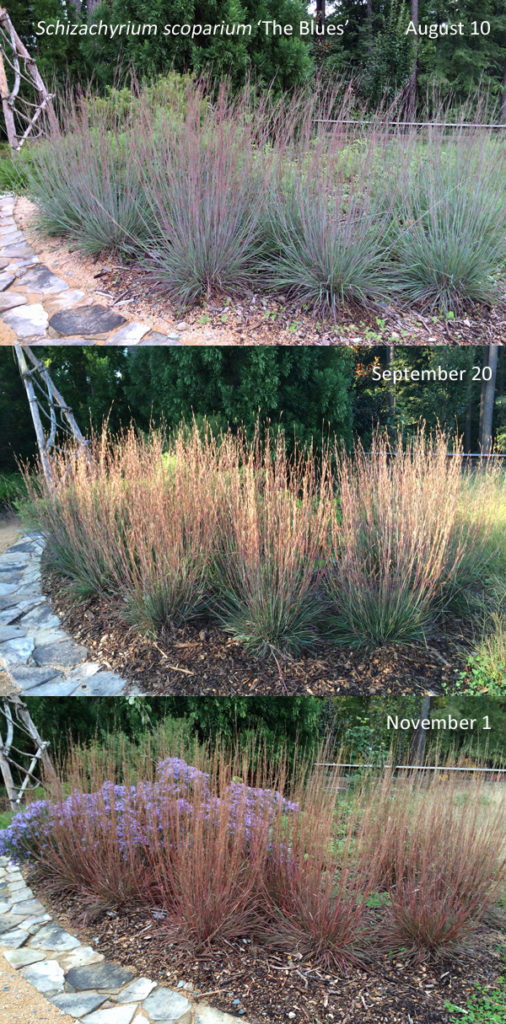The Perennial Plant Association (PPA) has named its 2022 Perennial of the Year — Little Bluestem (Schizachrium scoparum) (USDA hardiness zones 3-9). This ornamental grass was chosen because it is suitable for a wide range of growing climates, is low maintenance, and offers multiple-season interest.

This North American prairie native grass is adaptable to many growing conditions. It is a warm season clumping grass that features blue tones in its summer foliage and a beautiful array of fall colors.
Little bluestem thrives in fall sun to partial shade and in average to poor dry soils. It is also a larval host to some species of butterflies and moths. It grows 3-4 feet high and around 1-2 feet wide. Avoid wet soils. Resistant to deer & rabbit browsing.
PPA board members selected several outstanding cultivars based on plant habit, foliage, and fall color well in several regional areas of the U.S. including: ‘Jazz’, ‘The Blues’, ‘Standing Ovation’, ‘Blue Heaven’, and ‘Carousel’. The cultivars were bred to be bluer in color and more upright in form.
This ornamental perennial warm-season, clumping grass has silvery-blue stems (particularly at the base) and leaves, making it an attractive addition to the landscape.
Little Bluestem is an excellent plant for wildlife. It serves as the larval host for several skipper butterfly species including Dusted Skipper, Cobweb Skipper, Ottoe Skipper, Indian Skipper, Swarthy Skipper, and he Crossline Skipper. Other insects that feed on Little Bluestem include grasshoppers, Prairie Walkingsticks, the leaf-mining beetles, thrips, spittlebugs, and leafhoppers. The seeds of this grass are eaten by songbirds. Little bluestem provides necessary overwintering habitat and food sources for many insects and birds. Female bumble bee queens nest at the base of bunch grasses, like Little Bluestem, where they are protected until they emerge in the spring.
Planting ideas: a lovely grassy texture for the middle of a perennial border, to soften the edge of a garden pond, or wind it through a naturalistic planting.
Information sources: Perennial Plant Association and American Horticulture SocietyW

‘Standing Ovation’ little bluestem

 Posted in
Posted in 
